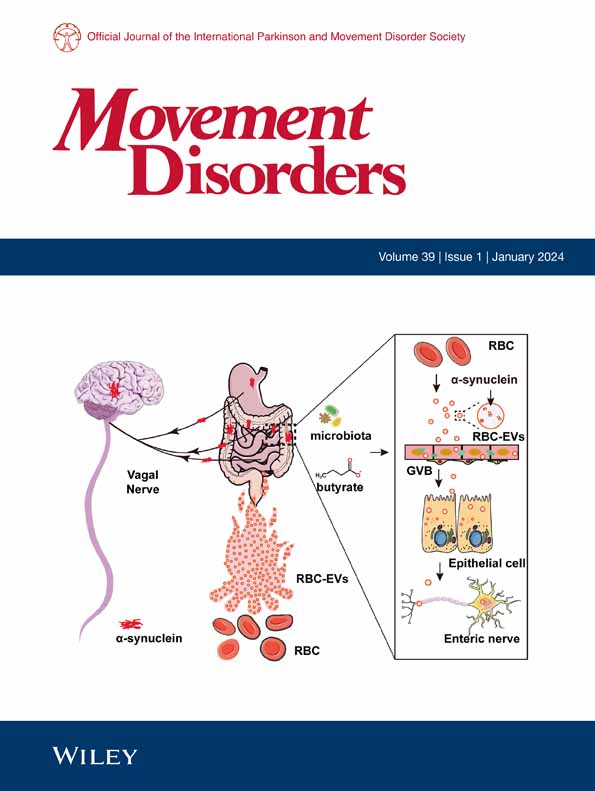Bart E.K.S. Swinnen MD, PhD, Colin W. Hoy PhD, Simon J. Little MD, PhD
求助PDF
{"title":"Towards Adaptive Deep Brain Stimulation for Non-Motor Symptoms in Parkinson's Disease?","authors":"Bart E.K.S. Swinnen MD, PhD, Colin W. Hoy PhD, Simon J. Little MD, PhD","doi":"10.1002/mds.30212","DOIUrl":null,"url":null,"abstract":"<p>Non-motor symptoms are prevalent, disabling, and difficult to treat at all stages of Parkinson's disease (PD). Whereas current deep brain stimulation (DBS) for PD targets motor symptoms, quality of life improvement, or lack thereof, is often largely determined by non-motor symptoms. So far, the effect of DBS on non-motor PD symptoms is insufficient, and neuromodulation targeted specifically at improving non-motor PD symptoms has been largely unaddressed. In this review, we provide a comprehensive overview of the effect of DBS on non-motor PD symptoms and discuss DBS-induced non-motor side effects including apathy and hypomania. We highlight the distinct neuroanatomical and temporal dynamics of these non-motor PD aspects. With the recent emergence of sensing-enabled DBS devices, we propose that research into responsive neuromodulation targeted specifically at non-motor symptoms is now feasible and timely. We outline potential non-motor adaptive DBS (aDBS) strategies that could be tested with currently available hardware. We conclude by highlighting important challenges that would need to be addressed for implementing aDBS for non-motor symptoms in PD. These include physiomarker validation, optimization of aDBS algorithms and control policies, the need for technological innovations, and incorporating ethical considerations. This review aims to provide a roadmap for clinicians and researchers to accelerate the development of non-motor aDBS in PD. © 2025 International Parkinson and Movement Disorder Society.</p>","PeriodicalId":213,"journal":{"name":"Movement Disorders","volume":"40 9","pages":"1759-1777"},"PeriodicalIF":7.6000,"publicationDate":"2025-07-18","publicationTypes":"Journal Article","fieldsOfStudy":null,"isOpenAccess":false,"openAccessPdf":"","citationCount":"0","resultStr":null,"platform":"Semanticscholar","paperid":null,"PeriodicalName":"Movement Disorders","FirstCategoryId":"3","ListUrlMain":"https://movementdisorders.onlinelibrary.wiley.com/doi/10.1002/mds.30212","RegionNum":1,"RegionCategory":"医学","ArticlePicture":[],"TitleCN":null,"AbstractTextCN":null,"PMCID":null,"EPubDate":"","PubModel":"","JCR":"Q1","JCRName":"CLINICAL NEUROLOGY","Score":null,"Total":0}
引用次数: 0
引用
批量引用
Abstract
Non-motor symptoms are prevalent, disabling, and difficult to treat at all stages of Parkinson's disease (PD). Whereas current deep brain stimulation (DBS) for PD targets motor symptoms, quality of life improvement, or lack thereof, is often largely determined by non-motor symptoms. So far, the effect of DBS on non-motor PD symptoms is insufficient, and neuromodulation targeted specifically at improving non-motor PD symptoms has been largely unaddressed. In this review, we provide a comprehensive overview of the effect of DBS on non-motor PD symptoms and discuss DBS-induced non-motor side effects including apathy and hypomania. We highlight the distinct neuroanatomical and temporal dynamics of these non-motor PD aspects. With the recent emergence of sensing-enabled DBS devices, we propose that research into responsive neuromodulation targeted specifically at non-motor symptoms is now feasible and timely. We outline potential non-motor adaptive DBS (aDBS) strategies that could be tested with currently available hardware. We conclude by highlighting important challenges that would need to be addressed for implementing aDBS for non-motor symptoms in PD. These include physiomarker validation, optimization of aDBS algorithms and control policies, the need for technological innovations, and incorporating ethical considerations. This review aims to provide a roadmap for clinicians and researchers to accelerate the development of non-motor aDBS in PD. © 2025 International Parkinson and Movement Disorder Society.
适应性深部脑刺激治疗帕金森病非运动症状?
在帕金森病(PD)的所有阶段,非运动症状是普遍的、致残的、难以治疗的。虽然目前深部脑刺激(DBS)治疗PD的目标是运动症状,但生活质量的改善或缺乏通常在很大程度上取决于非运动症状。到目前为止,DBS对非运动性PD症状的影响尚不充分,专门针对改善非运动性PD症状的神经调节在很大程度上尚未得到解决。在这篇综述中,我们全面概述了DBS对非运动性PD症状的影响,并讨论了DBS引起的非运动性副作用,包括冷漠和轻躁狂。我们强调这些非运动PD方面的独特神经解剖学和时间动力学。随着最近有传感功能的DBS装置的出现,我们提出针对非运动症状的反应性神经调节的研究现在是可行和及时的。我们概述了潜在的非运动自适应DBS (aDBS)策略,可以用当前可用的硬件进行测试。最后,我们强调了在PD的非运动症状中实施aDBS需要解决的重要挑战。其中包括生理标记验证、aDBS算法和控制策略的优化、技术创新的需求以及纳入伦理考虑。本综述旨在为临床医生和研究人员加速PD非运动性aDBS的发展提供一个路线图。©2025国际帕金森和运动障碍学会。
本文章由计算机程序翻译,如有差异,请以英文原文为准。


 求助内容:
求助内容: 应助结果提醒方式:
应助结果提醒方式:


